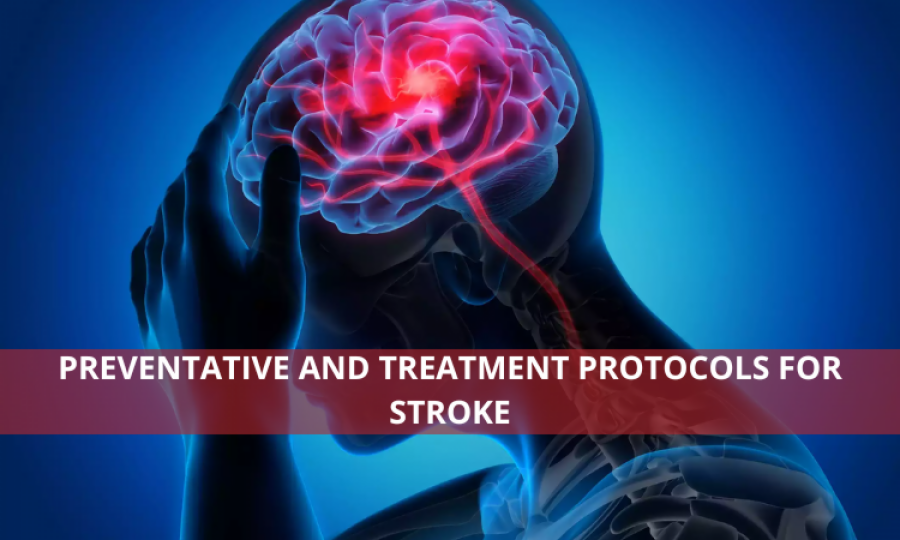Preventative and Treatment Protocols for Stroke

A stroke is an emergency in which blood flow to the brain is halted. The brain requires a steady supply of oxygen and nutrients to function properly. In the absence of these, brain cells start to die, leading to functional impairments. A stroke may impact your ability to eat, speak, move, think, and remember. It can also potentially cause a loss of control over bowel movements, emotions, and other essential body functions.
Prevention:
Identification of risk factors and working on them is essential for prevention. Some ways to control these risk factors include:
● Lifestyle Changes: A healthy lifestyle decreases the risk of a stroke. This may include smoking cessation, taking a balanced diet, maintaining a healthy weight, regular exercise, and limiting the intake of alcohol.
● Medications: A healthcare provider may prescribe certain medications according to your case. Such types of medicines may include:
➢ Blood thinners to prevent clot formation
➢ Antiplatelets, like aspirin, to reduce clot formation
➢ Blood-pressure drugs to maintain a healthy blood pressure
➢ Cholesterol-lowering drugs which reduce plaque formation in arteries
➢ Heart medicines for certain heart conditions which increase the likelihood of strokes occurring
➢ Diabetic medicines to manage blood glucose levels that may cause issues leading to strokes
● Surgery: Numerous types of surgery may be performed to treat strokes or prevent their occurrence. The possibilities include the following:
➢ Carotid Endarterectomy: This prevents strokes by removing plaque and clots from the carotid arteries in the neck which supply blood to the brain.
➢ Carotid Stenting: A stent, which is essentially a large metal coil, is put in the carotid artery.
➢ Surgery to repair aneurysms and arteriovenous malformations: These malformations are an entwinement of arteries and veins which affects blood circulation and increases the risk of bleeding. Bulges in blood vessels due to weaknesses in the vessel walls are called aneurysms.
➢ Patent Foramen Ovale Closure: Foramen ovale is a hole located between the heart’s upper chambers that usually closes soon after birth. Clots or air bubbles may pass into brain circulation if it does not close, resulting in a stroke.
Treatment:
Emergency treatment options include:
● Medication to destroy clots: Thrombolytic or fibrinolytic medications help to dissolve blood clots that cause ischemic strokes. These help in the reduction of damage to the brain due to strokes. They have the best outcome when administered within 3 hours of a stroke occurring.
● Medications for brain swelling: Certain intravenous fluids are provided to reduce or manage brain swelling. These are primarily used after hemorrhagic strokes.
● Neuroprotective Medication: Such medicines keep the brain safe from damage and lack of oxygen.
● Life support measures: These methods include utilizing machinery to help with breathing, giving intravenous fluids and proper nutrition, and controlling blood pressure.
● Craniotomy: This is a type of brain surgery which helps to provide relief from pressure, helps remove clots, or repairs bleeding in the brain.
Advertisement
Trending
Popular
Hair loss: Discovery uncovers key stem cells that could reverse ...
-
Broccoli sprout compound may help lower ...
11:31 AM, 25 Feb, 2025 -
Gas Pain vs. Heart Attack: How to tell ...
09:00 PM, 22 Feb, 2025 -
Coconut oil supplement shows promise ...
08:00 PM, 20 Feb, 2025 -
Normal vitamin B12 levels may still ...
05:00 PM, 19 Feb, 2025



